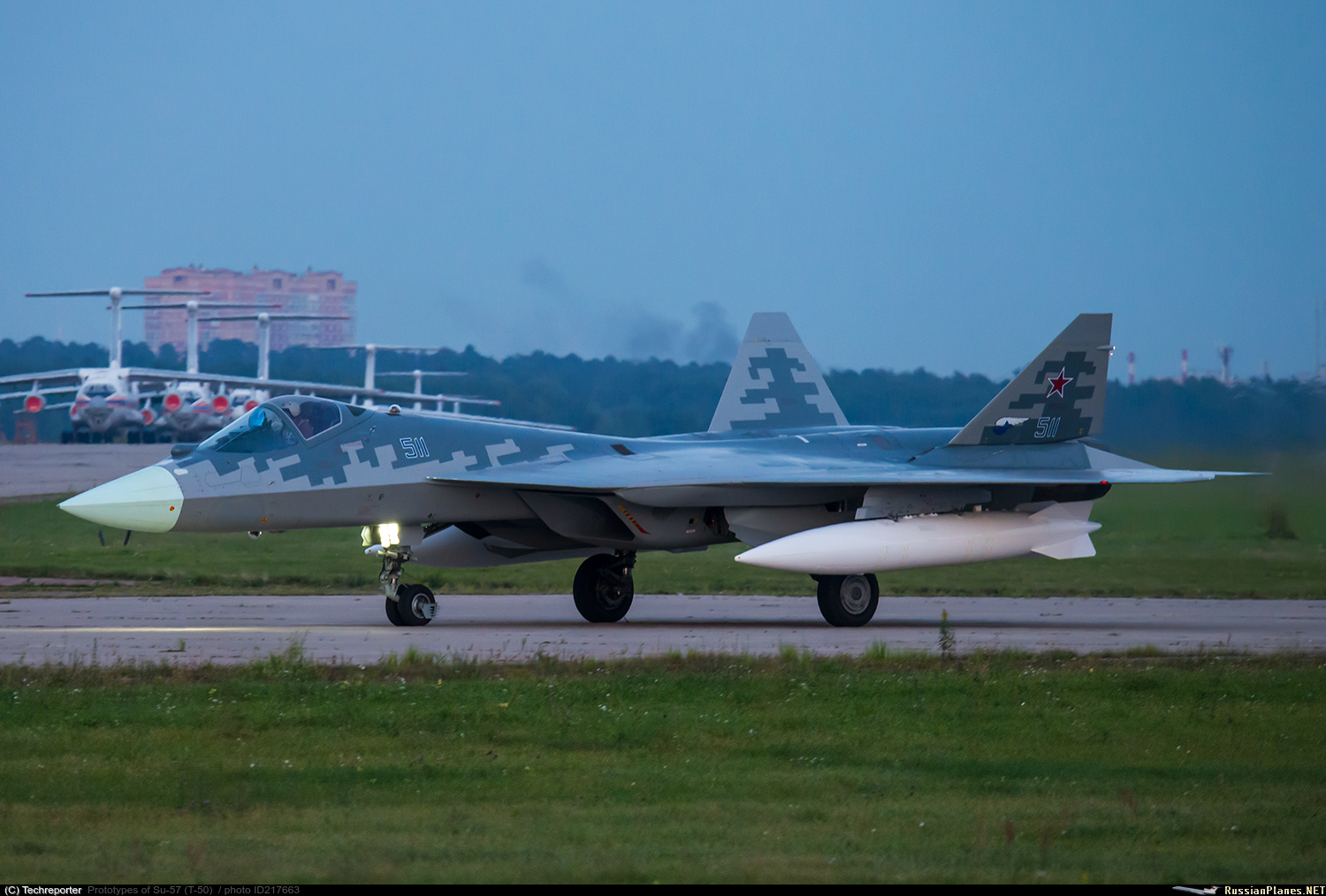Su-57 has the shaping and elements of stealth fighters ie internal bays, passive sensors, LPI AESA radar(s). It is obvious enough to the naked eye that it is not a stealthy fighter though.
No, it is not obvious to the naked eye. There are reasons to suspect that Su-57 might not enjoy the same level of signature reduction as F-22, but this does not translate to the claim that it is not "stealthy", let alone that it is an inferior combat system in its intended operational context.
RCS signatures are a series of continuums. On the one end of the scale there are platforms that employ no signature reduction measures, such as the F-15 or B-52, then there are those that employ modest signature reduction measures like Super Hornet, B-1B and the Eurocanards, and at the other extreme we have tailless platforms like the B-2. So-called "fifth generation fighters" all have higher RCS than the B-2 owing to their basic layout, yet we still call these aircraft "stealth aircraft". That Su-57 has a greater radar signature than other fifth-generation fighters tells us basically nothing about where it lies on this spectrum, let alone the operational implications in various dynamic contexts.
One thing we can be sure of, however, is that the designers of Su-57 are far more aware of the factors influencing RCS than lay observers are, and that the choices made are the product of careful judgments made according to specific operational requirements, cost/maintainability factors, and general design philosophies. As a general rule I don't second-guess the engineers of any nation. It is safe to assume that they know what they are doing. The question worth considering is, are they pursuing the right end? And I don't think there's enough information available to answer that.
Most of the more strident criticisms of Su-57 boil down to the simple logic that it is different to what the Americans have done and therefore it is wrong -- only with the novel twist that China is jumping on the bandwagon too. This is a nationalist and myopic perspective that will lead one astray as often as not, as it has on many previous occasions. None of this stuff has been validated in a peer threat environment, and until it has one should remain cautious about drawing conclusions that exceed the available data.
I don't have time for American or Russian posters who reflexively dismiss Chinese achievements, nor do I have time for Chinese posters who dismiss Russian achievements.


